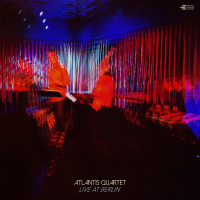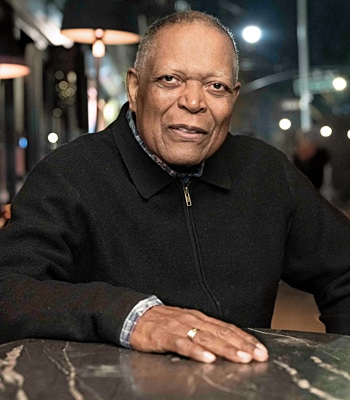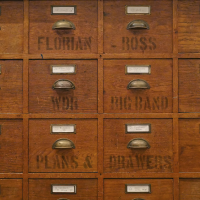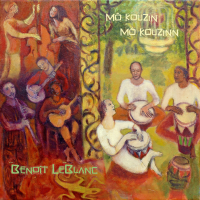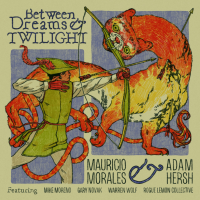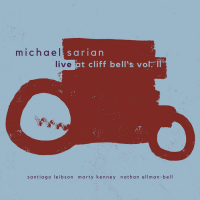Home » Jazz Articles » Multiple Reviews » A Savoy Revival: New OJCs from Hank Mobley & Yusef Lateef
A Savoy Revival: New OJCs from Hank Mobley & Yusef Lateef
By the mid-1970s, Savoy endured a turbulent stretch of shifting distribution deals, first aligning with Arista Records and later with Muse Records. In the early 1990s, Nippon Columbia acquired the holdings and capitalized on the growing compact disc market by issuing numerous titles. Now, kicking off what will hopefully become a sustained series of Savoy reissues, Craft Recordings has unveiled two albums under its revitalized Original Jazz Classics banner. Remastered by Kevin Gray at Cohearent Audio, these stellar editions are pressed at RTI and housed in glossy Stoughton tip-on jackets. Both titles have been out of circulation for years, with their most recent official reissues appearing in Japan around 2010.
 Hank Mobley
Hank Mobley Jazz Message #2
Craft Recordings
1957/2025
Saxophonist Hank Mobley, who passed away in 1986 at the relatively young age of fifty-five, left behind a rich and expansive legacy. His extensive discography reveals a singular voice—distinctive even within a pantheon that includes giants from Lester Young to John Coltrane. Following his work with Max Roach and Dizzy Gillespie, Hank Mobley entered a particularly fertile period of recording activity in the mid-1950s. Jazz Message #2 documents sessions held in July and November of 1956. That summer, Mobley seemed practically camped out at Rudy Van Gelder's famed studio, laying down no fewer than three sessions within a single week. Interestingly, Prestige Records issued two other albums from that same creative burst—Mobley's Message and Mobley's 2nd Message—their titles echoing the one heard here.
Two extended tracks fill the first side, beginning with the relaxed swing of "Thad's Blues," which spotlights a very young Lee Morgan at the dawn of his remarkable career. After Morgan's fiery choruses, Mobley follows with a breathy, unhurried statement, more measured in tempo but equally captivating in its lyricism. Art Taylor's Afro-Cuban groove propels "Doug's Minor B' Ok," providing the rhythmic foundation for Mobley's sinuous lines to unfold at center stage. Side two presents a different lineup of Detroit luminaries, sans drummer Kenny Clarke. All three compositions are Mobley originals, underscoring his growing stature as a writer. "Space Flight," with its elongated phrases and refined harmonic sense, stands out in particular, an upbeat piece that captures some of Mobley's most inspired playing on the date.
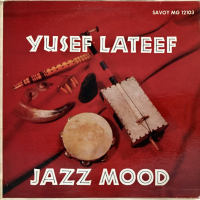 Yusef Lateef
Yusef Lateef Jazz Mood
Craft Recording
1957/2025
Born in Chattanooga and raised in Detroit, Yusef Lateef is widely regarded as one of the first artists to explore the possibilities of what would later be called world music. His first recordings came relatively late—at the age of thirty-seven—and the sessions from April 1957 would form the basis of his Savoy debut, Jazz Moods. Working under a nonexclusive contract, Lateef remained busy throughout that year, also recording for Prestige and Verve. Joined by his Detroit colleagues Curtis Fuller, Hugh Lawson, Ernie Farrow, and Louis Hayes, Lateef pursues his muse in ways both engaging and remarkably forward-looking for the period. The oboe-like argol introduces the opening track, "Metaphor," which soon gives way to a swinging romp highlighted by Lateef's buoyant flute work. Fuller's trombone follows with a burnished tone, while Lawson's piano lines flow with lyrical ease. The upbeat blues "Yusef's Mood" unfolds with spirited solos from Lawson and Fuller before Lateef's robust tenor takes command across several exuberant choruses. "The Beginning," appearing several years before Dave Brubeck's celebrated forays into odd meters, is a Lateef tenor feature in 7/4 time.
Side two opens with the album's longest track, "Morning," propelled by an ostinato from the stringed rabat and an array of percussive textures. Lateef stretches out on tenor, weaving extended phrases over the recurring pulse and Lawson's sparse harmonic backdrop. Both Fuller and Lawson join in, adding depth and motion to the hypnotic groove. In contrast, "Blues in Space" closes the set on a bright note, its bop-inflected phrasing suggesting Lateef's evolving artistic outlook. It is a fitting conclusion to a concise yet deeply satisfying album, one whose total impact far exceeds the sum of its individual parts.
Tracks and Personnel
Jazz Message #2Tracks: Thad's Blues; Doug's Minor B'Ok; B. for B.B."; Blues Number Two; Space Flight.
Personnel: Hank Mobley: tenor sax; Lee Morgan, Donald Byrd: trumpet; Hank Jones, Barry Harris: piano; Doug Watkins: bass; Art Taylor, Kenny Clarke: drums.
Jazz Mood
Tracks: Metaphor; Yusef's Mood; The Beginning; Morning; Blues in Space.
Personnel: Yusef Lateef: tenor sax, argol, flute; Curtis Fuller: trombone; Hugh Lawson: piano; Ernie Farrow: bass, rabat; Louis Hayes: drums.
Tags
PREVIOUS / NEXT
Support All About Jazz
 All About Jazz has been a pillar of jazz since 1995, championing it as an art form and, more importantly, supporting the musicians who make it. Our enduring commitment has made "AAJ" one of the most culturally important websites of its kind, read by hundreds of thousands of fans, musicians and industry figures every month.
All About Jazz has been a pillar of jazz since 1995, championing it as an art form and, more importantly, supporting the musicians who make it. Our enduring commitment has made "AAJ" one of the most culturally important websites of its kind, read by hundreds of thousands of fans, musicians and industry figures every month.




